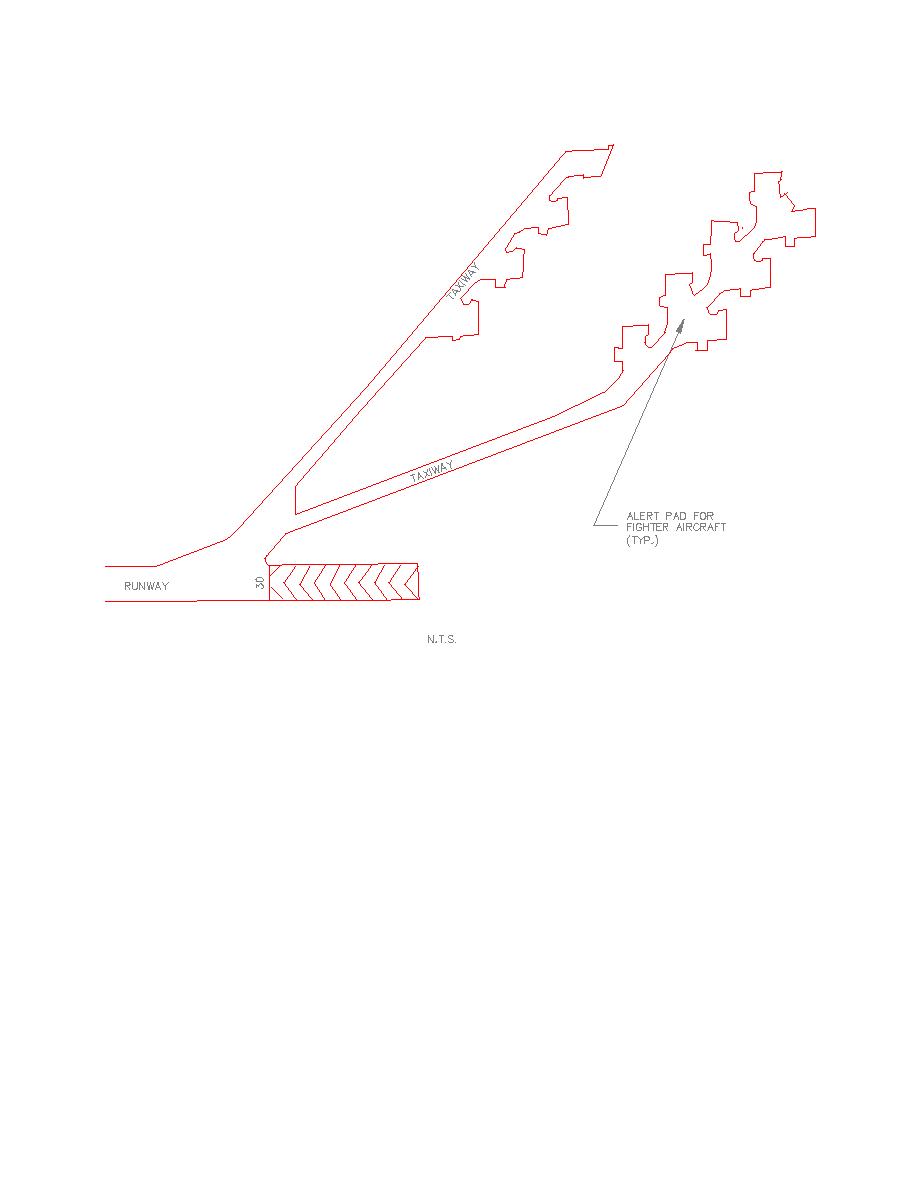
Chapter 6
Figure 6.28. Typical Alert Pad for Fighter Aircraft.
6.13.1. Navy and Marine Corps Requirements. Alert Pads are not normally required at Navy and
Marine Corps facilities. When justified, this criterion will be used.
6.13.2. Location. Locating the alert pad adjacent to a runway end will allow alert aircraft to proceed
directly from the apron to the runway threshold without interruptions from other traffic. Alert pads
must be located close to the runway threshold to allow alert aircraft to be airborne within the time
constraints stipulated in their mission statements. The preferred location of alert pads is on the
opposite side of the runway, away from normal traffic patterns to allow aircraft on the alert pad
direct, unimpeded access to the runway.
6.13.3. Siting Criteria:
6.13.3.1. Airspace Imaginary Surfaces. As discussed in paragraph 6.8.3.3, aircraft parked on the
alert pads must not project into airspace imaginary surfaces.
6.13.3.2. Explosives Consideration. Aircraft on alert pads loaded with explosives should be
located to minimize the potential for explosive hazards. Explosives safety site plans must be
prepared for explosive loaded alert aircraft. See Attachment 10.
6.13.4. Alert Pad Size. Alert pads should be sized to park all of the aircraft on alert. The
dimensions of the pad should vary with the length and wingspan of the aircraft to be served and the
explosives on the aircraft. Wingtip clearances, presented in Table 6.3, are minimum separation
6-47


 Previous Page
Previous Page
